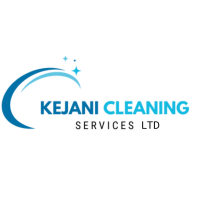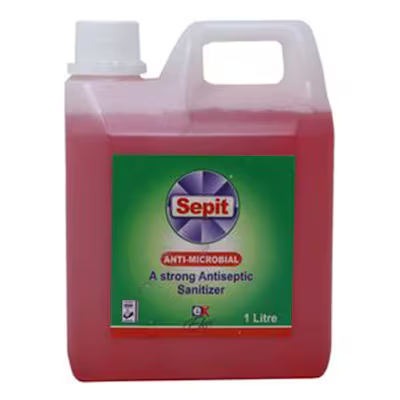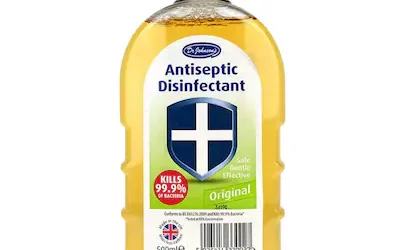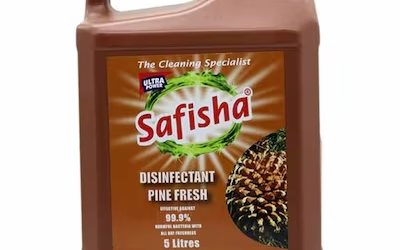🧽 Introduction: Why This Topic Matters
From hospitals to homes, cleaning isn’t just about appearances—it’s about health and safety. In your daily life or professional cleaning routine, you’ve likely used:
-
Disinfectants (e.g., bleach)
-
Sanitizers (e.g., hand gel)
-
Antiseptics (e.g., Dettol or alcohol)
But what makes them different? How do they work? And more importantly, which one should you use in different situations?
Whether you’re a homeowner, restaurant operator, cleaning company, or potential franchisee of Kejani Cleaning Services, this guide will help you make better, safer decisions.
🔍 Key Definitions
1. Disinfectants
Chemicals designed to destroy or inactivate nearly all pathogenic microorganisms (bacteria, viruses, and fungi) on non-living surfaces.
-
Examples: Sodium hypochlorite (bleach), hydrogen peroxide, quaternary ammonium compounds (quats), alcohol (70%+)
-
Use: Toilets, doorknobs, hospital beds, sinks
2. Sanitizers
Agents that reduce the number of microorganisms on surfaces or skin to safe levels, as judged by public health standards.
-
Examples: Alcohol-based hand rubs, chlorine solutions (for food surfaces), soap and water
-
Use: Kitchen countertops, public dining areas, food packaging surfaces
3. Antiseptics
Substances applied to living tissue (skin or mucous membranes) to prevent or stop infection.
-
Examples: Iodine, chlorhexidine, alcohol (60-70%), hydrogen peroxide (3%)
-
Use: Hand cleaning, wound care, surgical scrubbing
⚖️ Disinfectants vs Sanitizers vs Antiseptics: Quick Comparison Table
| Feature | Disinfectant | Sanitizer | Antiseptic |
|---|---|---|---|
| Target Area | Non-living surfaces | Food-contact surfaces or skin | Living tissue |
| Germ Kill Rate | Kills 99.9–100% of pathogens | Reduces bacteria to safe levels | Kills or inhibits bacteria |
| Use Case | Bathrooms, medical tools | Food prep surfaces, hands | Hands, wounds |
| Toxic to Skin? | Yes | Usually safe | Safe |
| Food Safe? | No (unless specified) | Yes (food-grade types) | Not applicable |
🧬 How Do Disinfectants and Antiseptics Work?
1. How Do Disinfectants Kill Microorganisms?
Disinfectants use chemical action to destroy the cell walls, enzymes, or internal structures of microbes.
Common Mechanisms:
-
Oxidation: Bleach and hydrogen peroxide damage microbial proteins and DNA by oxidizing them.
-
Protein Denaturation: Alcohols like ethanol denature proteins, disrupting cell metabolism.
-
Cell Membrane Disruption: Quats break apart cell membranes, causing cell death.
-
DNA Damage: Some compounds directly destroy genetic material inside bacteria or viruses.
🧪 Result: The microbe is killed or rendered unable to reproduce.
2. How Do Antiseptics Kill Microorganisms?
Antiseptics work similarly to disinfectants, but their formulations are gentler to avoid damaging skin or tissue.
Mechanisms:
-
Alcohols: Disrupt cell membranes and denature proteins (same as disinfectants, but lower concentration).
-
Iodine Compounds: Penetrate cell walls and inactivate essential proteins and enzymes.
-
Hydrogen Peroxide (3%): Oxidizes essential cell components.
-
Chlorhexidine: Destroys bacterial cell membranes, especially useful in mouthwashes or surgical scrubs.
💡 Fun Fact: Many antiseptics are also bacteriostatic—meaning they inhibit growth instead of killing immediately.
🔄 Key Differences Between Disinfectants and Antiseptics
| Feature | Disinfectants | Antiseptics |
|---|---|---|
| Surface Type | Inanimate (floors, walls, toilets) | Living tissue (skin, mucous membranes) |
| Formulation | Strong, often corrosive | Mild, non-irritating |
| Germ Spectrum | Broad-spectrum (bacteria, viruses, fungi) | Primarily bacteria; some cover viruses |
| Skin Compatibility | Harmful to skin | Safe for human tissue |
🧴 Disinfectants vs Sanitizers: When to Use What?
-
Disinfectants are used when you need total germ elimination. This includes:
-
Hospitals
-
Toilets
-
Office desks
-
Gym equipment
-
-
Sanitizers are used when you need quick bacterial reduction, particularly:
-
Food prep areas
-
Kitchen surfaces
-
Public eating spaces
-
Childcare surfaces
-
🧠 Pro Tip: Disinfectants typically require longer “dwell time” (5–10 minutes). If you wipe them off too quickly, they may not work!
❓ Frequently Asked Questions (FAQ)
Q1: Can you use disinfectants as hand sanitizers?
A: No. Disinfectants are too harsh and toxic for skin. Use alcohol-based hand sanitizers instead.
Q2: Can I use antiseptics on surfaces?
A: You can, but they’re less effective than disinfectants on hard surfaces and usually not cost-efficient.
Q3: What is the safest option for food-contact surfaces?
A: Use food-safe sanitizers approved by local public health bodies.
Q4: Are sanitizers less effective than disinfectants?
A: Yes, but that doesn’t mean they’re bad. Sanitizers are great for frequent use where full disinfection isn’t practical.
🛒 Buy Disinfectants, Sanitizers & Antiseptics in Kenya
Looking for reliable products for your business or home? Kejani Cleaning supplies:
-
Hospital-grade disinfectants
-
Skin-safe hand sanitizers
-
Medical antiseptics
-
Surface & food-safe sanitizers
🛍️ Browse Products Now
📞 Need help choosing? Call +254 115 887 085
📦 Nationwide delivery | 🚚 Bulk pricing available
📣 Final Thoughts
Understanding the difference between disinfectants, sanitizers, and antiseptics isn’t just scientific—it’s practical. Knowing how each works and when to use them can save you money, protect your health, and ensure compliance in regulated environments.
At Kejani Cleaning, we supply both products and expertise. Whether you’re a school, hospital, restaurant, or home, our team helps you build safer, cleaner spaces.




0 Comments